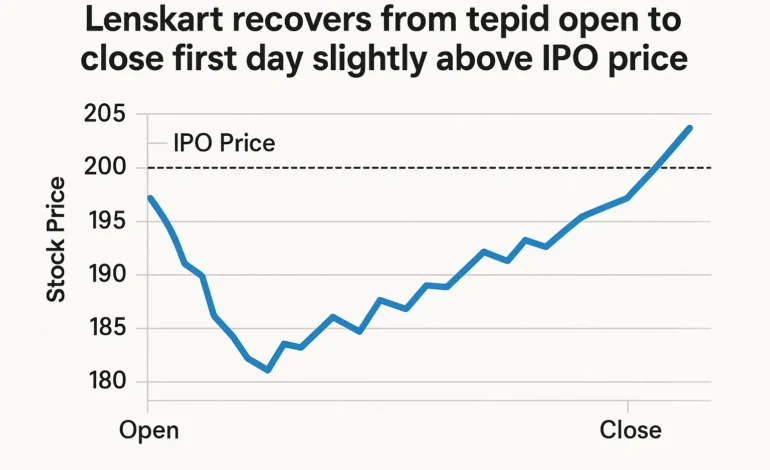Scribe Reaches $1.3 Billion Valuation as It Proves Real AI Profitability

Table of Contents
The AI-startup landscape is entering a phase of trying to show real profitability, and when Scribe confirms its new valuation of $1.3 billion after raising $75 million in an all-equity Series C round, that milestone speaks volumes. Founded in 2019 by Jennifer Smith and Aaron Podolny, Scribe has built a platform Scribe Capture and Scribe Optimize that claims to save individual team members 35–42 hours per month and accelerate hiring by 40%.
This shows how workflow and process documentation tools, long seen as “nice to have”, may now become foundational to enterprise AI adoption. Looking ahead, investors and corporate buyers alike will be watching whether Scribe’s uptake translates into sustained revenue growth. From an investor standpoint, the valuation jump is eye-catching; from a user perspective, the potential to cut costs and scale processes matters even more.
The AI Workflow Documentation Opportunity
Why workflow matters in enterprise AI
In the rush to adopt generative AI, many companies struggle to answer the question: What should we automate first? Scribe’s CEO said that without knowing how work is actually done, it’s hard to know where automation adds value. That implies the market for tools that map and optimise workflows is large. According to an analysis of AI valuations, median multiples in 2025 stand at about 25–30× EV/Revenue.
This context suggests enterprise AI tools that can show a clear ROI are getting premium valuation treatment. For investors, this means that Scribe is not just riding the generative-AI hype wave but is anchoring itself in a tangible cost-saving and process-scaling proposition. Companies that skip the workflow mapping step risk automating the wrong processes—a key pitfall in AI roll-outs. The fact that Scribe has documented 10 million workflows across 40,000 apps is a strong signal it may be gaining traction.
Key metrics from Scribe’s raise
Scribe’s Series C round was led by StepStone with participation from existing investors such as Tiger Global Management and Redpoint Ventures. The raise valued the company at $1.3 billion and came more than a year after its Series B of $25 million. The company’s valuation has increased five-fold since its last round according to the report.Scribe claims to serve paid customers in 78,000 organisations, and teams in 94% of the Fortune 500 are using its software.
For investors, those numbers indicate both deep enterprise penetration and broad customer interest, which increases the chance of monetisation scaling. However, we must note that revenue figures were not disclosed, so the valuation is still based on growth expectations rather than full transparency. This shows a caveat: strong uptake and penetration alone don’t guarantee profitability.
Implications for Investors & Market Trends
Valuation and exit environment
The broader AI market shows that funding and valuations remain elevated. Venture-capital metrics indicate that AI startups in 2024-25 are commanding hefty valuations even at relatively early stages. Scribe’s $1.3 billion valuation fits within this pattern—but it stands out because it ties to operational metrics (workflow counts, enterprise adoption) rather than just speculative product promises.
Scribe may sit in a more defensible position than some other AI startups where the value proposition remains unproven. Looking ahead, the exit market (M&A or IPO) for AI-workflow companies could benefit if they show consistent revenue growth and tangible savings to enterprise customers.
Risks and investor take-aways
Despite the promise, there are risks. First, Scribe must convert its broad usage into consistent high margin recurring revenue. Without disclosed revenue numbers, the valuation relies partly on what “could be”. Second, competition is real: companies like Tango, UserGuiding and others compete in process-documentation and workflow optimisation. Scribe mentions them directly.
Monitor Scribe’s next 12–18 months for revenue milestones, gross margins, and client retention rates. This shows whether efficacy translates into economics. If those numbers hold, Scribe could be a strong bet in enterprise AI; if not, the premium valuation may be hard to justify.
Company Focus: Scribe’s Growth and Product Strategy
Product evolution and monetisation path
Scribe’s flagship product, Scribe Capture, lets users record workflows and automatically generate step-by-step guides with screenshots and annotated instructions. The company now plans to roll out Scribe Optimize, a platform that maps workflows across the enterprise, highlights inefficiencies and points to where automation may yield ROI. For investors this is important: the transition from documentation to optimisation is the path to higher monetisation.
Documentation is useful, but optimisation and automation link directly to cost-reduction and value which enterprises pay more for. As Scribe doubles its headcount from 120 to roughly 240 in the next 12 months, that signals aggressive expansion and investment in its product roadmap. A critical measure for investors will be how quickly Scribe transitions into its enterprise-scale “Optimize” offering and how that offering is priced and adopted. Don’t miss our recent post about Apple Reportedly Developing Ambitious Satellite-Powered Features for iPhone.
Enterprise traction and customer metrics
The article reports Scribe has users across large organisations such as LinkedIn, HubSpot, New York Life and T‑Mobile. Customers using Capture claim saving “35–42 hours per person per month” and speeding new hire onboarding by 40%. These figures strengthen the value-proposition. For investors, what matters next is the average contract value (ACV), renewal rates, and how many customers upgrade to the higher-value Optimize tier. If Scribe converts its installed base into higher ARPU (average revenue per user) customers, the valuation makes more sense.
Investor Reaction / Market Sentiment
On social media the reaction appears broadly positive, especially among workflow-automation and operations-leadership circles. For example, users highlight how Scribe simplifies documentation burdens and helps scale best practices across diverse teams. (See @Scribe on X for customer anecdotes.) That forms a favourable sentiment signalling that Scribe is solving a real pain-point.
However, some venture-commentators remain cautious given the broader macro-tech environment and the need for proof of monetisation. That means investor sentiment is optimistic with measured caution a good sign but not a guarantee.
Bottom Line
In summary, Scribe’s $1.3 billion valuation on November 10, 2025 positions it as a noteworthy player in enterprise AI, leaning into the workflow-documentation and optimisation space. For investors and stakeholders, the key action points are: monitor Scribe’s revenue disclosures, customer upgrade rates, and retention metrics; evaluate how well Scribe’s product transitions from documentation to optimisation; and watch how competition affects pricing and market share.
If Scribe can convert its broad usage and enterprise penetration into strong monetisation, it will validate this valuation. For now, it represents a compelling glimpse of where AI profitability may emerge—not in flashy models alone, but in the everyday work processes they help streamline.




